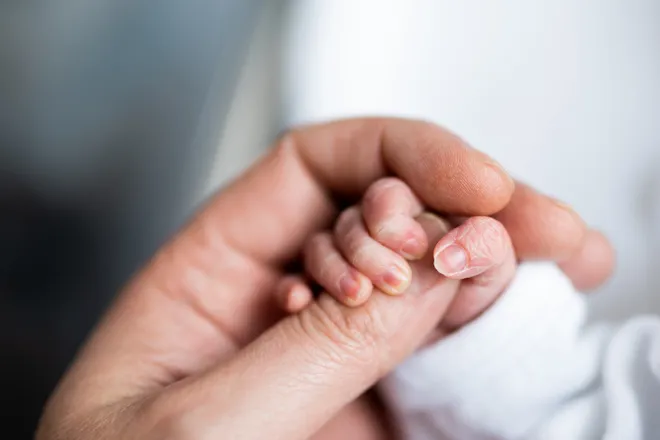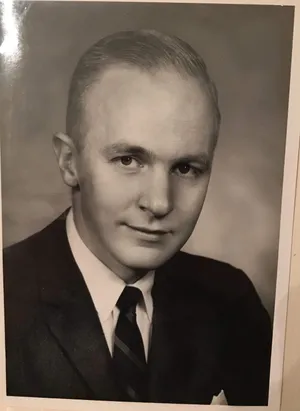There was an outcry about ‘practice babies’ on TikTok. It’s not as crazy as it sounds.
No perfect parenting method exists. But a number of decades ago, educators thought differently – so much so that they acquired babies from local orphanages for home economics students to "parent."
Yes, you read that right. So-called "practice babies" lived among college students at dozens of universities between the 1920s and the 1960s. Articles have popped up about practice babies over the years, but the lore resurfaced on TikTok earlier this year along with the hashtags "#truecrime," "#horror" and "#creepy."
"My grandmother had these babies at her sorority! Could you imagine?" one TikTok user noted. Another added: "Sounds horrible at first but then like a community/village taking care of the child, a whole 'family' of a sort."
Some historians are divided on the "practice baby" era and whether it is deserving of the appalled response it receives. Research shows these infants were well cared for and likely received more attention than they would have in orphanages, but also promulgated troubling gender norms. So why, exactly, do people care so much about practice babies? It challenges the family structure we're accustomed to today. And it also makes us wonder about how we might've turned out if raised in such a manner.
"Today, most people, most psychologists will tell you that giving kids attention and affection is the best thing you can do for them," says Megan Birk, historian and author of "The Fundamental Institution." "And it doesn't really matter where it comes from."
What exactly are 'practice babies?'
While models differed across universities, the gist went like this: a group of women – home economics college students – would take turns living in a group house for weeks at time, managing all kinds of household chores including child rearing.
This began in the 1920s as a solution to the misconception that women who sought a college education would struggle to become competent mothers. This, on its face, reads as patriarchal, but was very much a product of its time – though nonetheless gasp-worthy through a 2024 lens.
"There was this sense that expert instruction and advice would be useful," says Jessaca Leinaweaver, cultural anthropologist at Brown University.

Practice baby programs popped up at Cornell University, University of Minnesota and dozens more across decades; students likely "parented" hundreds of babies. Most were wards of the state, but some were still in the custody of their parents who needed time away from their child to find a job, a place to live, etc. The babies would live in the house for up to a year or two.
"There's a real push during that time period, to rely on expertise and practical learning, laboratory work, things like that," Birk says. Truly, "the more hands-on the better."
'They couldn't trace anything broken in those kids'
This piece of history always raises eyebrows, Birk says.
"It's always something that really sort of strikes people as very interesting," Birk says. "I don't want to say it's not unique because it certainly is. But there were lots of uses of institutionalized, independent children during this time period." Many of these situations were dark – like boys sent to work in poultry production processing plants.
Practice babies, on the other hand, perhaps enjoyed a better life than they'd have in an orphanage. Attention, affection, good food, medical care – not so many downsides.
Of course, people still questioned whether this was in the best interest of the child. A huge study from Iowa State (in the 1950s, at least) determined the program didn't harm children. "They couldn't trace anything broken in those kids that would be a result of their time spent on campus," Birk says.
Not everyone agrees. Just ask Oregon State practice baby Shirley Kirkham, who told the Associated Press back in 1999: "I strongly believe that if you're handled at such a young age by so many people and you don't get a chance to bond with anyone, that you will have troubles later on in life." (Attachment theory.)
Elsewhere, Leah Brooks' grandfather, Robert Brooks, was a practice baby back in 1929 at the University of Knoxville, according to her grandmother. Though he died young due to a surgical complication, all signs point to him living a happy life.
But "I feel empathetic for the fact that he might not have lived long enough to really recognize or come to terms with any effects of it, if there had been," Brooks, 26, says.

Heads up:Dave Ramsey, a 22-year-old named Emma and what not to say to parents
Why the practice baby era ends
Practice babies went out of style less because of concern for the children and more due to structural issues. The baby boom of the 1950s included an adoption boom, for example. If social agencies had the opportunity to place a child with parents over home economics students, they would.
"What child welfare authorities started being more vehement about was that what a kid needed was a family and that getting them as quickly as possible into an adopted family would be better for them," Leinaweaver says, pointing to why this practice likely makes us scratch our heads in the present. "And why take a year where they'd be poked and prodded and treated like a guinea pig?"
That's part of why the practice feels so outdated when discussed today. Plus, the gender norms of previous decades don't apply now; Anyone – regardless of gender – can be involved in a child's life.
Things have changed a lot.
"I don't think that any university today, would accept the liability of being in charge, like full time in charge of someone's baby or toddler," Birk says. "And I think you'd be hard-pressed to get anyone to pay for a house where lots of 21- and 22-year-old students are living and raising a child."
In case you missed:Kourtney Kardashian, Travis Barker welcome baby. Let the attachment parenting begin.

Disclaimer: The copyright of this article belongs to the original author. Reposting this article is solely for the purpose of information dissemination and does not constitute any investment advice. If there is any infringement, please contact us immediately. We will make corrections or deletions as necessary. Thank you.







